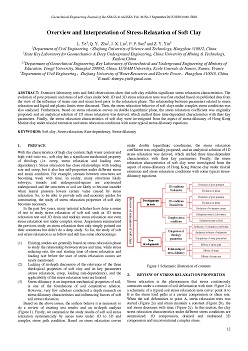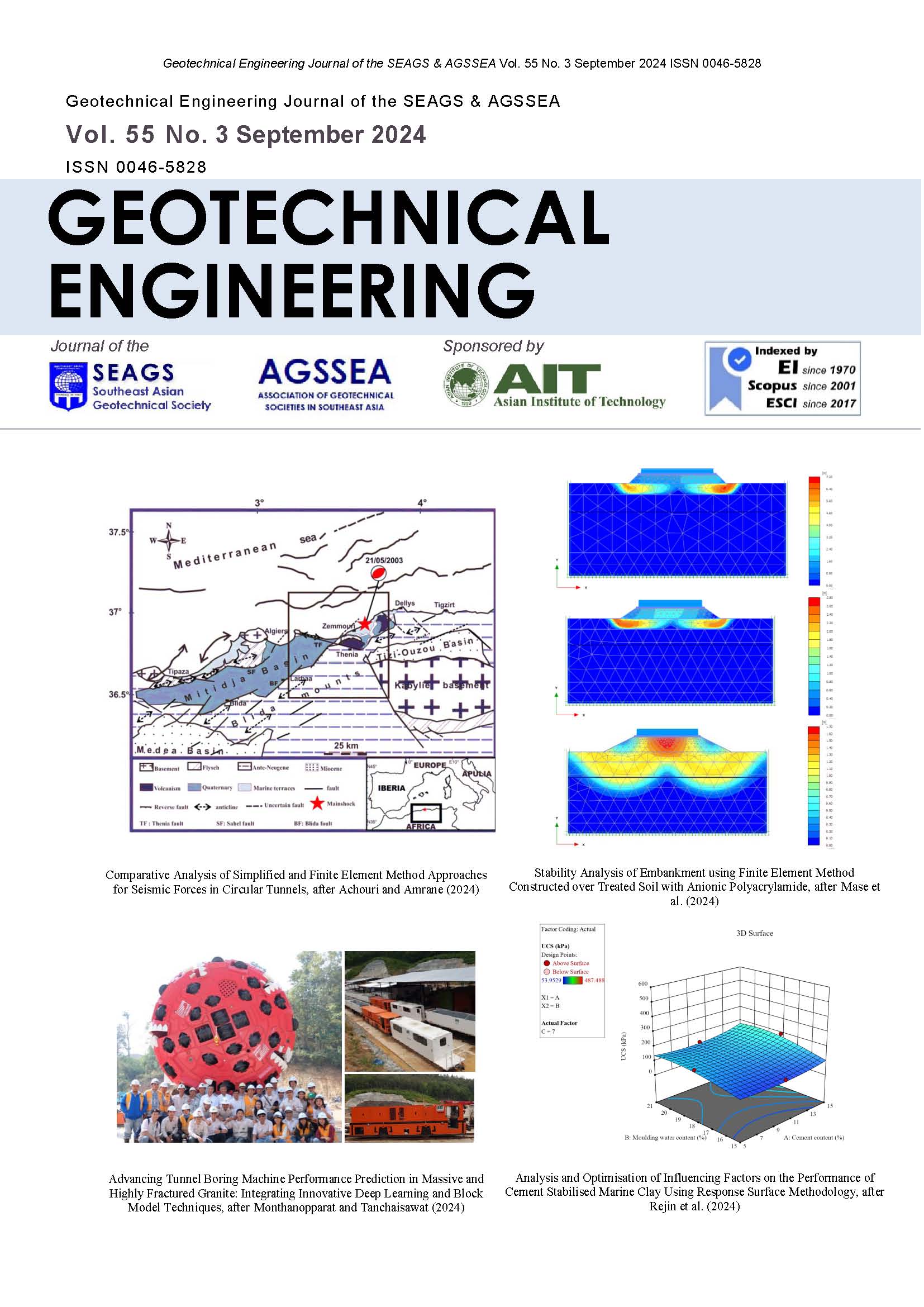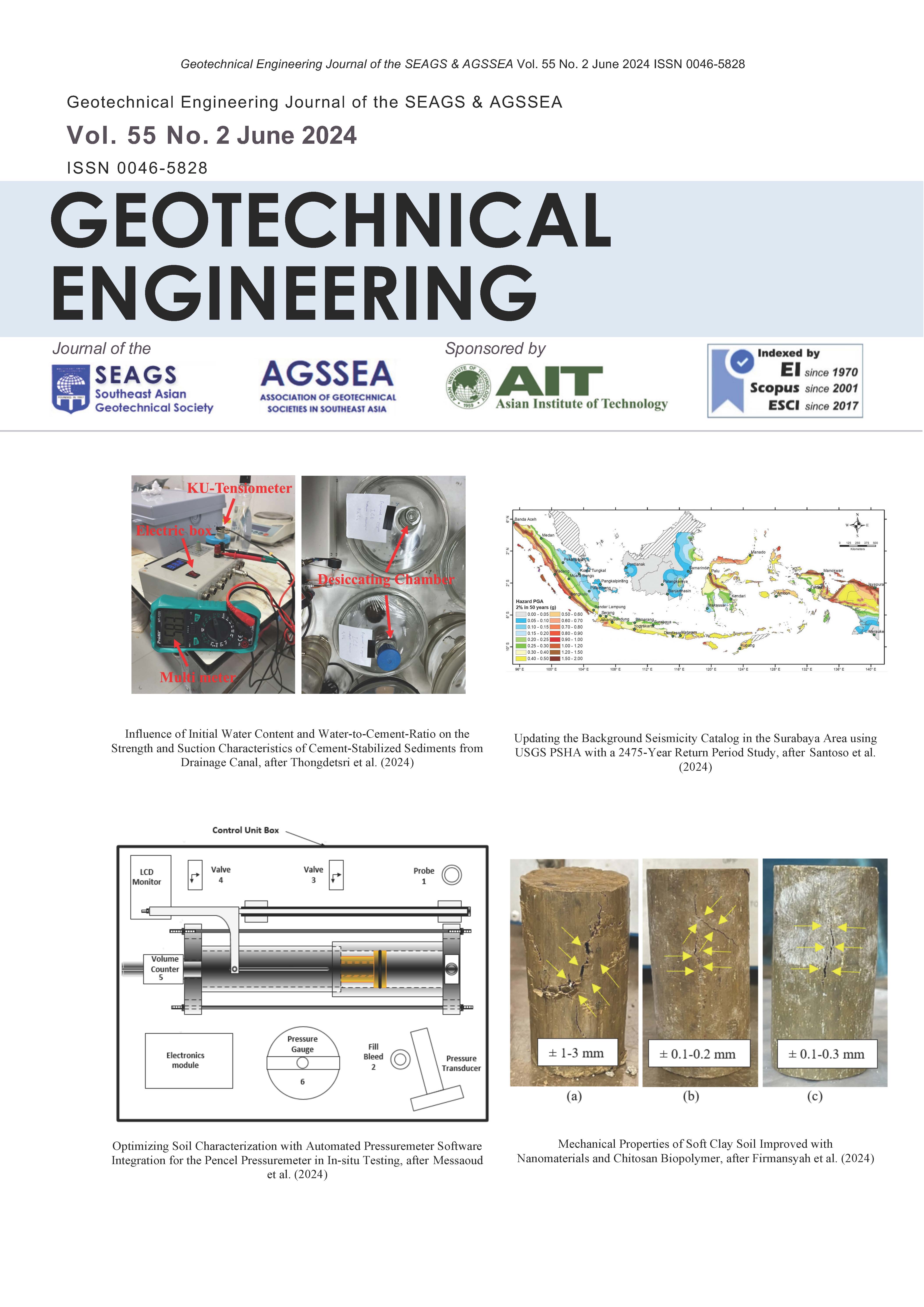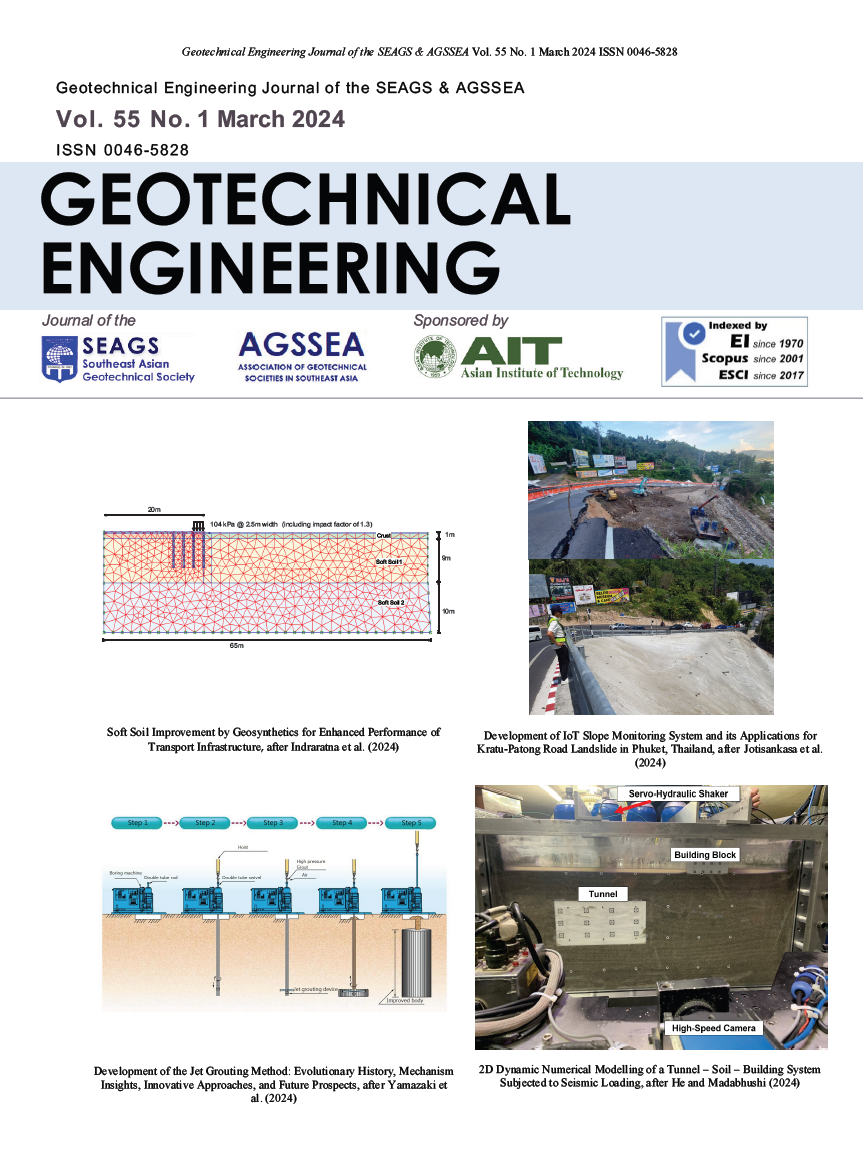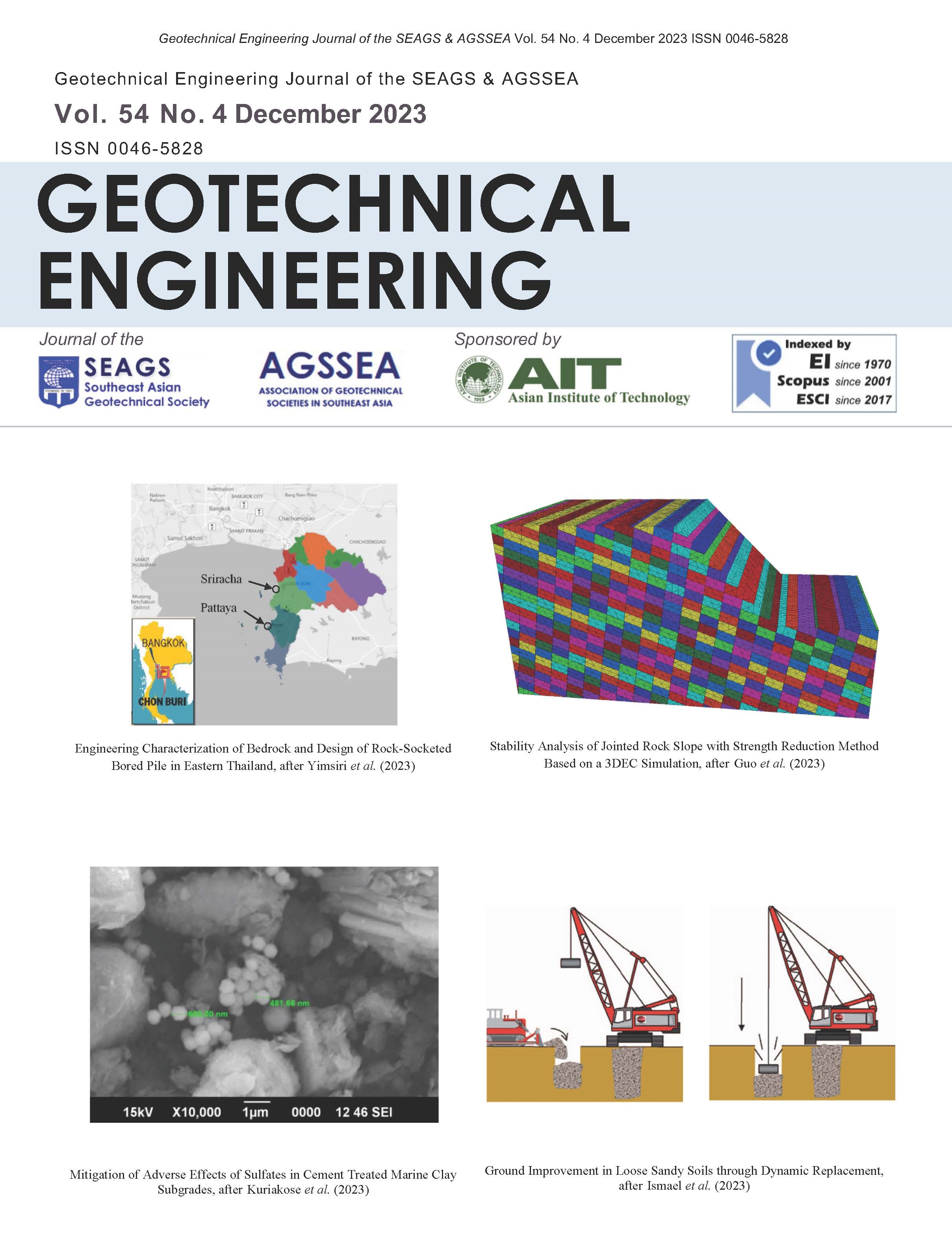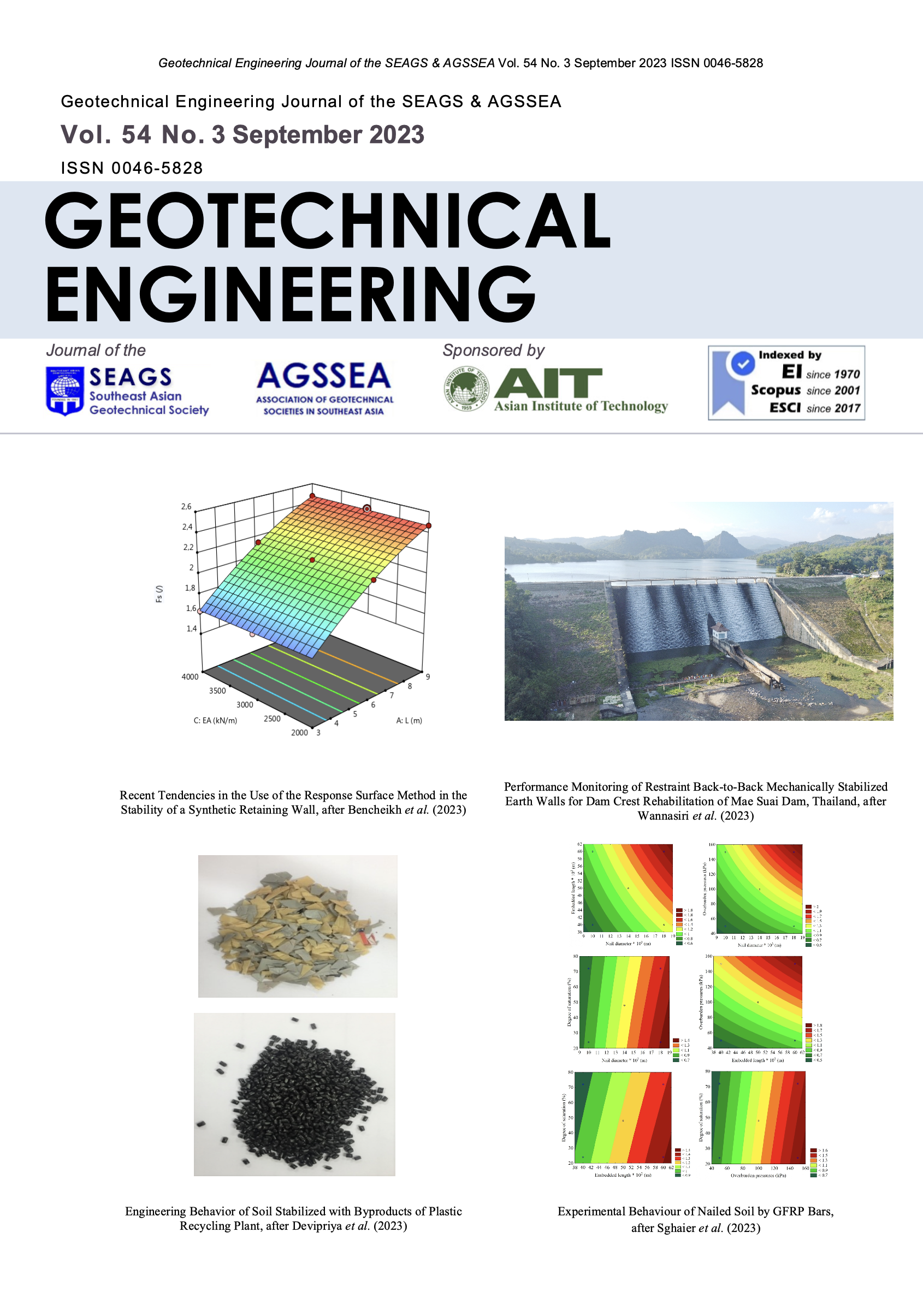Geotechnical Engineering Journal of the SEAGS & AGSSEA ISSN 0046-5828
Vol. 46 No.3 September 2015
Overview and Interpretation of Stress-Relaxation of Soft Clay
L. Ye1, Q. Y. Zhu2, J. X. Liu3, P. P. Sun4 and Z. Y. Yin5
1Department of Civil Engineering,Zhejiang University of Science and Technology, Hangzhou 310012, China
2State Key Laboratory for Geomechanics & Deep Underground Engineering, China University of Mining & Technology, Xuzhou, China
3,5Department of Geotechnical Engineering, Key Laboratory of Geotechnical and Underground Engineering of Ministry of Education, Tongji University, Shanghai 200092, China. LUNAM University, Ecole Centrale de Nantes, Nantes, France
4Department of Civil Engineering,Zhejiang University of Water Resources and Electric Power,Hangzhou 310018, China
5E-mail: zhenyu.yin@gmail.com
ABSTRACT: Extensive laboratory tests and field observations show that soft clay exhibits significant stress relaxation characteristics. The evolution of pore pressure and stress of soft clays under both 1D and 3D stress relaxation tests was first studied based on published data from the view of the influence of strain rate and strain level prior to the relaxation phase. The relationship between parameters related to stress relaxation and liquid and plastic limits were discussed. Then, the stress relaxation behavior of soft clays under complex stress conditions was also analyzed. Furthermore, based on stress relaxation curves on double logarithmic plane, the stress relaxation coefficient was originally proposed, and an analytical solution of 1D stress relaxation was derived, which unified three time-dependent characteristics with their key parameters. Finally, the stress relaxation characteristics of soft clay were investigated from the aspect of stress-dilatancy of Hong Kong Marine clay under triaxial extension and stress relaxation conditions with some typical stress-dilatancy equations.
KEYWORDS: Soft clay, Stress relaxation, Rate-dependency, Stress-dilatancy
